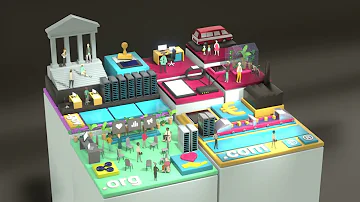What is free software explain?
“Free software” means software that respects users' freedom and community. Roughly, it means that the users have the freedom to run, copy, distribute, study, change and improve the software. Thus, “free software” is a matter of liberty, not price.
What is free software called?
The least restrictive no-cost programs are programs without copyright — i.e., free software — that are in the public domain. Freeware is often created by independent developers and made available for download on their own websites or through third-party app stores.

Why is free software so important?
Free software gives users the freedom to study how the program works by accessing the source code, writing additional code, testing, modifying and distributing it. These things are prohibited for proprietary software.
What are the four rules that define a free software?
4 freedoms conferred to the users define free software : the freedom to run the program, for any purpose; the freedom to study how the program works, and change it so it does the computing as the user wishes.
What are the three characteristics of free software?
List three characteristics of free software. Free software is software that users have freedom for distribution and changes. Free software is free to be (1) studied, (2) redistributed and (3) modified.
What is free source software examples?
- GNU/Linux.
- Mozilla Firefox.
- VLC media player.
- SugarCRM.
- GIMP.
- VNC.
- Apache web server.
- LibreOffice.
What was the first free software?
Launch of the free software movement
In 1983, Richard Stallman launched the GNU Project to write a complete operating system free from constraints on use of its source code.
What is the example of free software?
Some of the best-known examples include the Linux kernel, the BSD and Linux operating systems, the GNU Compiler Collection and C library; the MySQL relational database; the Apache web server; and the Sendmail mail transport agent.
What are the advantages and disadvantages of free software?
This software is available free of cost but only up to a certain time limit. Furthermore, after the time limit, the user has to pay the money to use the software. Since, after the time limit, the software deactivates itself. Its main advantage is that users can understand and know about the software before buying it.
What is free software characteristics?
Main characteristics of free software
Total freedom to use it as you wish and for any purpose. errors or proposing new developments that contribute to its progress. Freedom to freely distribute as many copies of the program as you wish so that others can also contribute with their innovations.
What is the difference between open and free software?
Open source is a development methodology; free software is a social movement."
Why free software is better than open source?
As one person put it, “Open source is a development methodology; free software is a social movement.” For the Open Source movement, nonfree software is a suboptimal solution. For the Free Software movement, nonfree software is a social problem and free software is the solution.
What is difference between free and open source software?
Open source is a development methodology; free software is a social movement."
Who started free software?
Richard M. Stallman
The free software movement was started in 1983 by computer scientist Richard M. Stallman, when he launched a project called GNU, which stands for “GNU is Not UNIX”, to provide a replacement for the UNIX operating system—a replacement that would respect the freedoms of those using it.
What is the difference between free software and open source software?
Open-source license criteria focus on the availability of the source code and the ability to modify and share it, while free software and public domain focus on the user's freedom to use the program, to modify it, and to share it.
What are the benefits of free and open software?
8 advantages of using open source in the enterprise
- FLEXIBILITY AND AGILITY. IT leaders must fundamentally provide flexibility and agility for their enterprise. …
- SPEED. …
- COST-EFFECTIVENESS. …
- ABILITY TO START SMALL. …
- SOLID INFORMATION SECURITY. …
- ATTRACT BETTER TALENT. …
- SHARE MAINTENANCE COSTS. …
- THE FUTURE.

